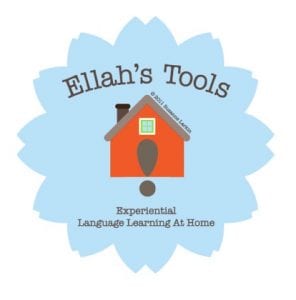Since graduate school, TAI Professor Suzanne Larkin has had a relationship with Texas Scottish Rite Hospital for Children and prototyped a program to aid learning for children with dyslexia. Professor Larkin got her Masters of Fine Arts degree in Visual Communication from Texas A&M Commerce (downtown Dallas), a program that combines Curriculum Development, Design Research, and Business.

“My inspiration came from a challenge as I was acquiring an MFA,” Professor Larkin said. “The challenge was to connect with a ‘giant’ and create something that could benefit them, and do what we call ‘move the needle,’ which means collect data that shows efficacy of what we do as visual communicators. In that challenge I kind of conducted a search, like what people do for thesis topic development. And that started with talking to others to find problems in major organizations where visual narratives or visual solutions could be beneficial. So part of my talking to people came out of tools that we use in the creative industry, like mind maps. I created maps to focus on who to talk to, and in which organizations. I kept running into the same response, and that was that children with dyslexia don’t have enough of the proper resources to help them grow at early diagnosis point, like 2nd and 3rd grade. I was inspired because I love to have fun in my work, and I like to do whimsical concepts. I used to design greeting cards. I’ve done radio, broadcast, outdoor, print. I’ve done it all in my career. So I thought this was a great opportunity to touch a target audience and provide something that hopefully benefits them.”
The Luke Waites Center for Dyslexia at Scottish Rite Hospital for Children is the organization that formulated the first definition of dyslexia, allowing children to be evaluated and diagnosed. When Professor Larkin initially reached out to Scottish Rite, she received a response within 20 minutes, leading her to believe that there was a real need for help.
“I met with Karen Avrit, who is the Education Director,” Professor Larkin said. “We got together during therapy time and talked about what the patients were doing. I asked ‘Why are the children trying to read stories from text when they have reading challenges? Have they ever seen these stories?’ Of course, I’m thinking about this as a visual communicator because pictures say a lot. Karen thought that was a valid question since they didn’t have a visual representation of the fluency stories.”
At that point Ms. Avrit and Professor Larkin realized that there could be a way of using visual narrative to help in teaching punctuation.
“Their fluency program already has a brand called ‘Take Flight,’” Professor Larkin said. “So I thought, if I’m going to create intellectual property for the punctuation, I’ll need to give it a brand too. And of course I got really excited, because I love to create brands. Then I started thinking about color, typography, style of graphics, and on and on.”

From there Professor Larkin developed Ellah’s Tools. Ellah, standing for Experiential Language Learning At Home, could act as an at-home supplement to “Take Flight,” a fluency program developed by the Center for Dyslexia.
“Karen asked me if there was a way to allow parents access to the tools so they could use them at home for supplementing what was being done during therapy time at school,” Professor Larkin said.
Professor Larkin did extensive research and concepting in the process of creating Ellah’s Tools. She had to find a way to animate and teach six basic punctuation marks to children with learning differences, in a way that would keep them engaged.
“Just like with branding, when things are always the same sometimes consumers get tired of it,” Professor Larkin said. “So of course these consumers would be second and third grade children so I want to make it exciting. Every week I gave them a different genre. The comma is based on blues. And I thought, okay, who is someone that inspires me when it comes to blues; well that was BB King. So the song was the style of BB King’s music.”
Throughout the creation process, Professor Larkin never had any sort of budget. She used a combination of her own talents, friends’ talents, and purchasing inexpensive stock music to create prototypes. She used Garage Band to create and edit the music, and Adobe Illustrator, Photoshop, and Flash to create the final product.

“One of my Professors at Texas A&M actually has a blues band,” Professor Larkin said. “They’ve been around for years, and so Bill Ford was gracious to sing the lyrics for the comma. And sang it in his style to music that sounded like typical BB King blues. Because I don’t have a budget, I used a high definition recorder that I purchased. And we recorded in closets and small office spaces, so that there was limited echo. All of that came together in Flash and what we decided to do was instead of flushing out everything at the beginning, because it’s research…and things change, we thought…let’s do it in segments.”
Ellah’s Tools is designed to be a visual curriculum that reinforces what students learn in therapy. In creating the first prototype, Professor Larkin got parents involved through solicitation with therapists at schools in Wiley, Texas. Each week, she gave the therapists a package that include a DVD for parents to use at home and games to go along with the fluency stories.
“Parents were excited to participate. One parent told me that her daughter kept reminding her not to miss the meeting! I met with them for coaching on how to use the prototypes that we were putting together,” Professor Larkin said. “One of the stories was about different types of animals on a farm, so I [created] a scavenger hunt [game]. Another story was about some kids at the beach, so I created a word and image match game. The parents had that to play with alongside a list of prompts that they could use to excite their kids, what kind of conditions that the environment should be in when the kids are interacting with the tools for best case scenario.”
Professor Larkin was able to get feedback from the parents as well as the therapists collecting data. She created a pre- and a post-test for the therapists to evaluate the students. Both tested students not only on their fluency, but on prosody, and their comprehension of punctuation.
“The post-test revealed encouraging data,” Professor Larkin said. “All of the students showed improvement in their reading abilities and comprehension in at least one area. That was really exciting for what it meant to have children experience learning in a different way. It was multi-sensory and reinforced their therapy at home but in a fun way. When the study was done the parents participated in a survey on Survey Monkey. The feedback was great.”
Professor Larkin is hopeful for the future of design research. Last semester she met with the Budd Center at SMU, looking for the potential of sharing the punctuation prototypes with public schools in Dallas. She is also waiting to hear back from a unique school in Dallas that was created specifically for children with learning differences.
“My hope is that there is a way to be able to share these tools, and create more,” Professor Larkin said. “Right now there still isn’t a budget, so that means grant writing, begging, and convincing. I think visual narratives can assist all learning styles.”

